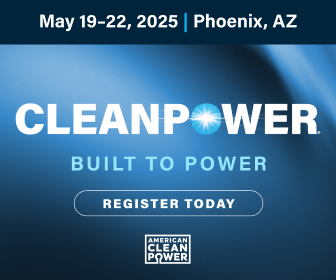Midwest PV Goes to Extremes
Renewable energy development continues to grow in the Midwest. In Minnesota, 54 percent of 2024 power was from zero-carbon sources; 84 percent of South Dakota’s energy is from renewables; and Illinois, Minnesota, and Michigan, all have state legislation with net-zero targets. This growth comes despite a trifecta of challenges: harsh climate, rough terrain, and vulnerability to catastrophic weather. Utility-scale solar stakeholders for Midwest sites need to prepare for everything from frost heave to wind-driven structural collapse to downtime loss from damaged trackers. Climate resilience and adaptability are imperative in protecting today’s PV systems.

EPCs, developers, and asset owners can strengthen resiliency with a ground-up approach that considers all risk factors. Decisions regarding foundations, racking, or software are not just project-based choices, they are decisions that impact the climate-readiness and long-term productivity of a site. Fortunately, ongoing advancements in the industry provide opportunities to build and maintain solar developments with additional risk protection.
On the ground – foundational solutions
The Midwest is known for record-breaking frost depth and prolonged sub-zero temperatures. While developers know it’s crucial to design systems to withstand extreme conditions, each site in the Midwest has a high degree of variability and requires a different approach to each element.
Foundations: With the mix of silt and clay across the Midwest, soil type can vary even on the same site and informs whether ground screws or driven piles are a more appropriate foundation. Ground screws are typically a better fit for frost-prone areas with high-refusal risks. Driven piles may be better suited to sites with minimal obstructions and low refusal risks. Understanding the foundation options for varying site conditions is key.

Piles lifted up due to frost heave in the winter can buckle. The height of the uplift is revealed in warmer months.
Racking: Mixed topography and sloped or undulating terrain are also common across the Midwest. High-slope tolerance and flexibility in racking systems is particularly important for challenging terrains. Adaptable racking solutions can help reduce grading costs, making installations faster and more cost-effective.
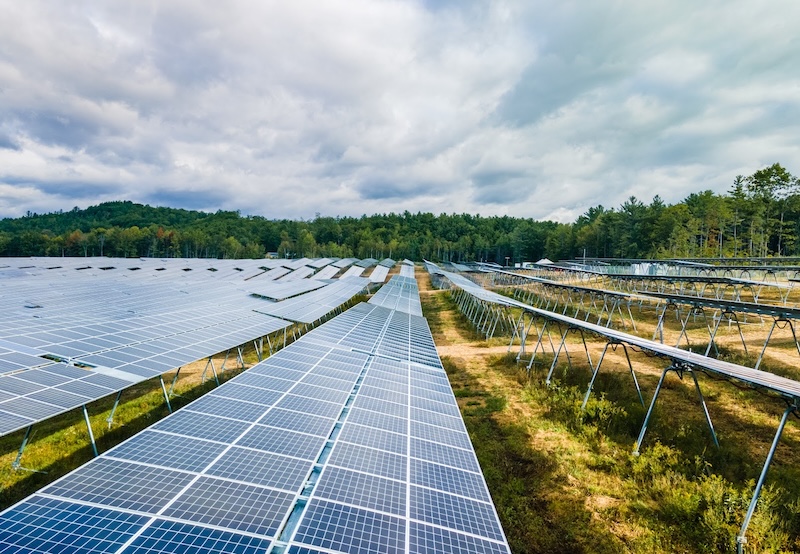
The Midwest is characterized by various types and degrees of slopes, though they don’t tend to be as high as those in some regions, like the Northeast.
Above ground – PV protections
The increasing frequency and intensity of extreme weather events have affected solar sites across the country. It’s imperative that EPCs and developers accurately calculate snow and wind loads when installing solar arrays in the Midwest.
Snow: Understanding the impact heavy snow load has on a solar structure is not an easy task. In Midwest winters, high snow loads can make racking collapse. Since there are no standardized industry building codes, engineering expertise is key. Higher gauges of steel, larger purlins, higher module tilt, higher module front edge height, and reinforced materials can all protect sites from heavier snows. Load simulation (using bricks or snow machines) provides deeper engineering insights into short- and long-term impacts.
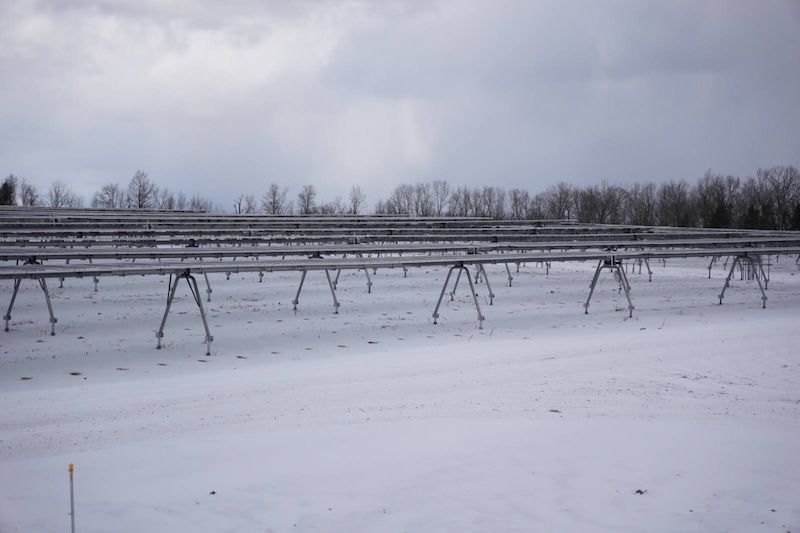
Tackling issues caused by snow is key to solar site success.
Hail: The top three states with the biggest increases in severe hail are all in the Midwest - Missouri, Illinois, and Indiana. Hail can cause both obvious PV module damage and micro-fracture damage. Micro-fractures are not visible to the naked eye but are a form of cell degradation that reduces output. Trackers that have the ability to go into stow mode can help prevent direct hits and minimize damage.
Wind: While snow loads primarily affect solar structures through downward force, wind loads affect a structure in multiple ways, rendering modules and systems even more vulnerable. Sudden gusts can load a structure to its maximum capacity within a short time frame, and wind strength can be unpredictable - March 2025 tornadoes in the Midwest and South brought winds up to 140 mph.
The type of wind is also a factor. Static winds can knock a structure over, dynamic winds can give rise to vertical motion and cause oscillations, and aero-elastic winds can cause tracker instability, in turn causing twisting from flutter and torsional galloping. Due to the difference between the heights and shapes of PV arrays versus more traditional structures, existing wind load codes don’t fully address how wind can affect solar panels and racking.
Partnering with a team that has experience designing and engineering for extreme weather environments is one of the best ways to protect a site even before it’s built.
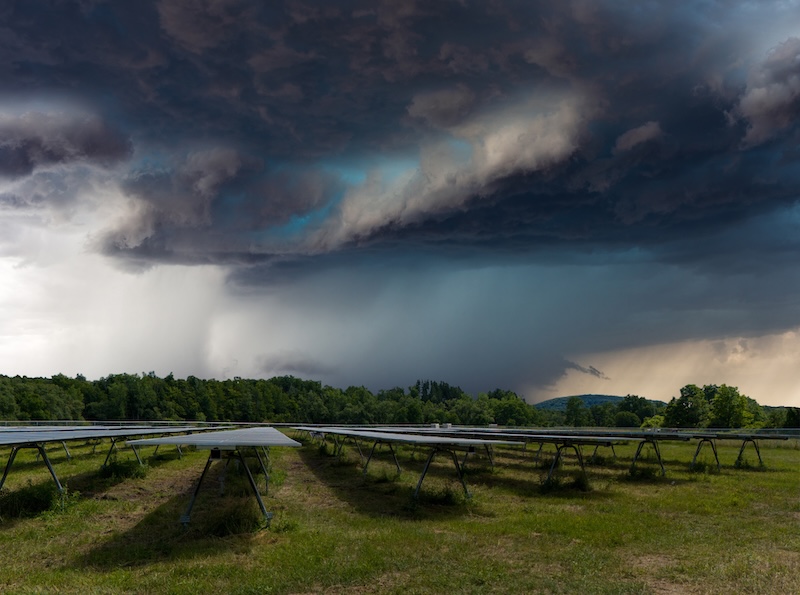
Behind the scenes – dynamic and informed decision-making
Software platforms, machine learning, and artificial intelligence are all providing enhanced decision-making capabilities for EPCs and O&M providers. Common features include trackers with smart controls, weather APIs with accurate forecasting, and smart technology with stow and snow shedding capabilities. Real-time monitoring with machine learning algorithms provides information on tracker performance, including row abnormalities.
Tracker systems that are designed to detect severe storms and automatically reposition themselves to minimize damage help take the unpredictability out of weather and offer advantages over fixed-tilt systems. Advanced tracker software that protects assets while boosting production adds further protection.
The combination of site-specific structural components and adaptive technology helps strengthen a site’s resilience, minimizing downtime, protecting sites from weather, and allowing stakeholders to troubleshoot issues quickly and remotely. In brief, technological advancements can help EPCs manage through tight budgets and schedules, and give developers and asset owners the tools to generate stronger returns.
Protecting solar assets by mitigating localized risks and optimizing systems yields high-performing sites — while also contributing to the expanding solar footprint across the U.S. Despite a series of challenges, renewable energy continues to reshape our energy landscape and drive forward a clean-powered future.
Ameer Abuhamdeh, currently serving as Innovation Engineer with Terrasmart, brings product development and mechanical engineering experience to his 5-year tenure at Terrasmart. His wind tunnel and product testing have produced innovative solutions for Terrasmart’s ground mount systems team. Abuhamdeh holds a degree from the University of Cincinnati with a Bachelor of Science in Mechanical Engineering.
Terrasmart | www.terrasmart.com
Author: Ameer Abuhamdeh
Volume: 2025 July/August









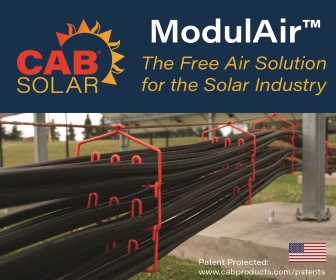

.jpg?r=1498)
